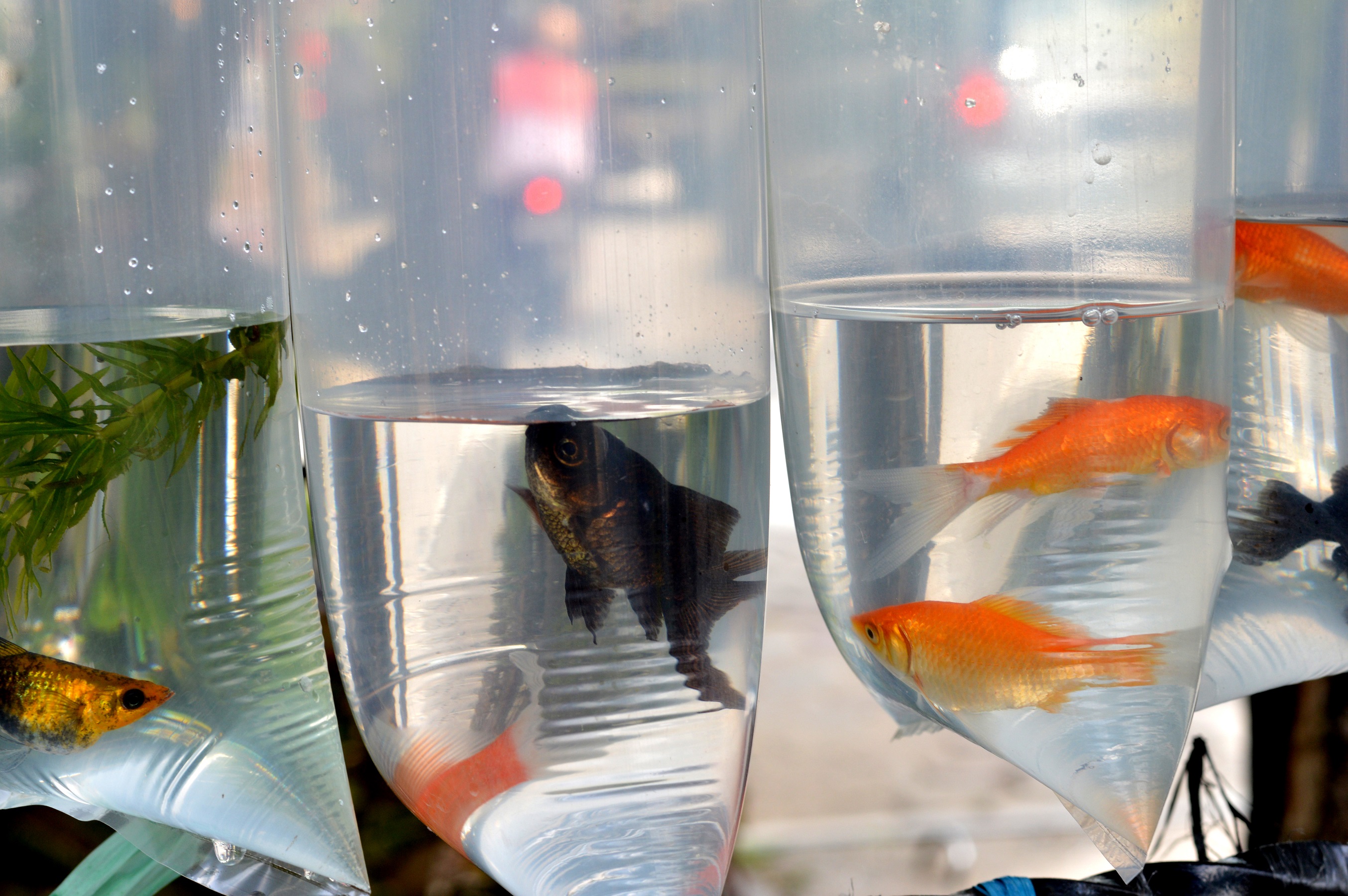Proper Planning is Essential for Transporting Fish
Glenn Polyn //March 1, 2021//
The art of bagging fish correctly is important. Doing it successfully requires preparation long before netting the fish. Everything starts before we bag the fish. Once the bag is sealed, everything the fish needs to survive and stay healthy, with minimal amounts of stress to reach their home aquarium, relies on the early preparations. Three key considerations are oxygen, temperature and water quality.
To start, we need to assure the fish in our stores are healthy, the water quality is correct, and we have the materials needed for netting, bagging and reducing stress. Throughout the day we are constantly walking past the aquariums in the store. We want to make sure that the fish are all acting normal, alert, and active. Looking at the fish in the morning is a start but we should perform health checks throughout the day. It is important to test and track water quality. At a minimum we want to test for pH, ammonia, nitrite, KH and temperature. Once the bag is sealed water quality parameters will begin to change.
As the fish respirate they will release carbon dioxide (CO2). High amounts of CO2 will drop the pH. If the KH is at least 60ppm (3 degrees) the pH will be more stable. Ammonia and nitrite should be zero. If the fish are in the bag for just an hour or two the ammonia released by the fish will be minimum in the bag. If we are shipping fish overnight or longer the fish should not be fed 24 hours prior to shipping. The water temperature in the bag can change quickly and as fish are cold-blooded they cannot regulate their body temperature. If the temperature deviates beyond the desired range they will become stressed. If it raises or drops too much they can die. The higher the temperature, the higher the respiration and the demand for oxygen increases and more CO2 and ammonia are released, deteriorating water quality in the bag.
Dissolved oxygen is the most limiting factor for transporting fish. The amount of available of oxygen is limited by the bag size and the amount of fish biomass load in the water. It is important to fill our bags with 1/3 water and 2/3 air. When transporting fish for just a few hours atmospheric air and controlling temperature, and limiting biomass in the bags is adequate for success. Another alternative is to utilize breathable fish bags – although these are more expensive, they are effective. In addition, if we are shipping fish overnight or for long periods, adding pure oxygen instead of atmospheric air is beneficial.
Stress is an important issue in the successful husbandry of aquarium fish. Exposure to stress evokes a series of physiological responses in fish, and netting and bagging are major stressors. Netting can damage the slime coat, skin and external barriers that fish need. Damage to this barrier leads to osmoregulatory concerns and leads to further stress. Reducing stress involves the way we handle our nets, capture, and bag the fish, and how we enhance the water in the bag. Adding API STRESS COAT has been proven to reduce stress in fish by up to 40 percent. Adding 1 ml of STRESS COAT to transport bags reduces stress, enhances the mucus coat and helps heal damaged tissue as a result of netting and bagging.
We should always move our nets slowly when capturing fish, have the specimen container filled with water prior to netting, have fish bags and closures readily accessible, and have STRESS COAT at the bagging area. Once the fish is netted and in the specimen container, we should pour the water from the container into the bag allowing the fish to freely flow with the water. Then add 1 ml of STRESS COAT and seal the bag. At no time should the bag be tossed or spun aggressively during the bagging process or during transport.
Once the fish is secure in the bag, handing off to the customer is a great time to educate. We need to inform the customer on the needs of the fish, once home float the bag for 10 to 15 minutes to acclimate the fish, equalizing the temperature in the bag with the aquarium water. Help them understand how to release the fish into the home aquarium using a net and not to add the bagged water to the aquarium. Then to relieve the stress of the new fish and the fish in the aquarium, when the new fish is released add API STRESS COAT to the aquarium.
Proper planning is essential to success ensuring we are protecting the fish and educating our customers. Helping customers through their journey of fishkeeping requires staying diligent about reminding every customer about how to further protect their fish and care for them, from the time they leave our stores to acclimation in their new home aquarium. The service and education we can provide is what makes every retail memorable.
Manager of industry relations for Mars Fishcare, Gary Jones is an aquatic scientist specializing in the ornamental aquarium and pond trade for over 30 years. He holds a Master’s degree in biology with emphasis in aquatics from East Stroudsburg University and degrees in Business and Marketing from Shippensburg University. He has taught Aquaculture, Aquatic Research, Aquatic Animal Science and Biology courses at various universities throughout Pennsylvania, New Jersey and Virginia.



















